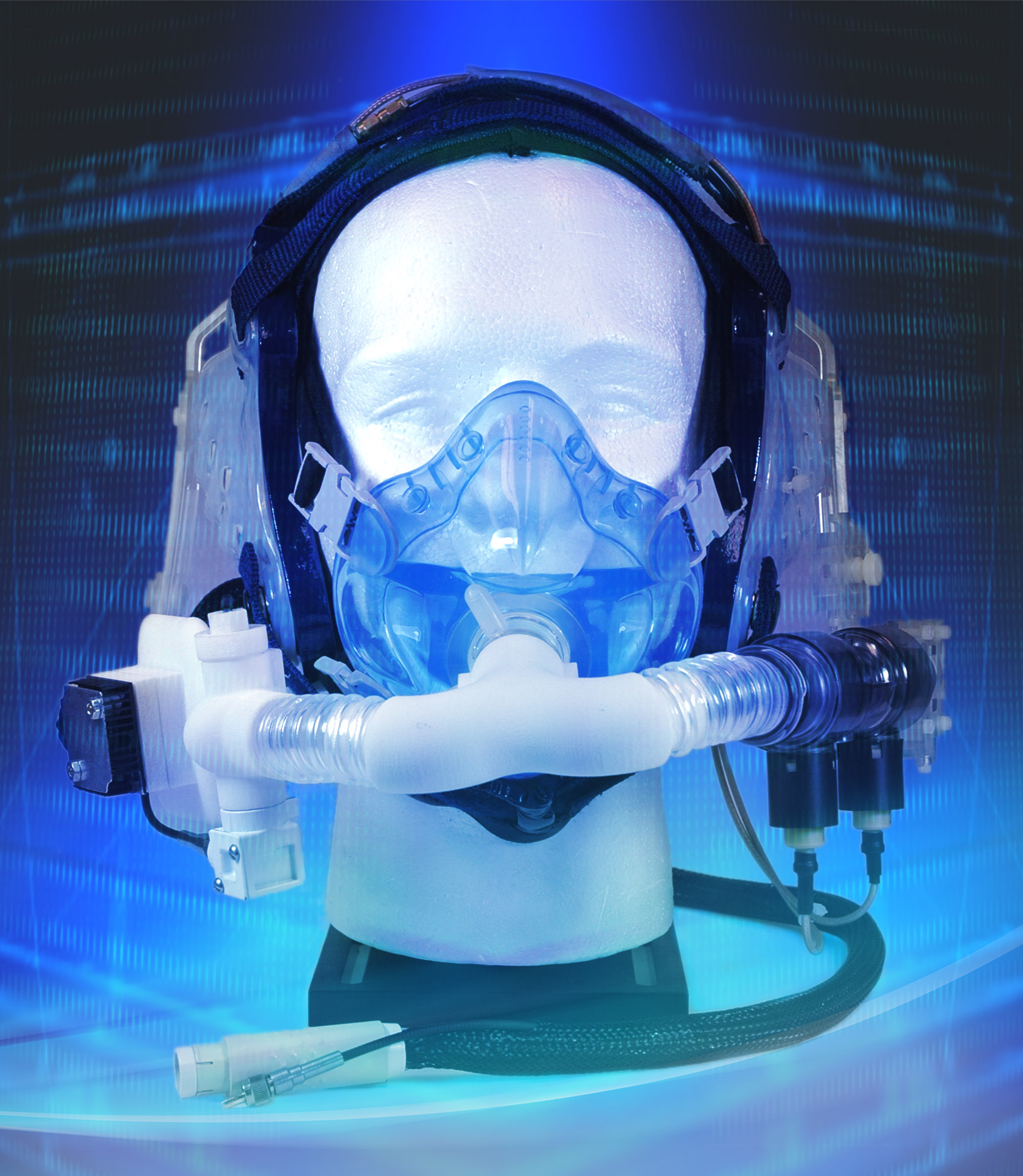
The Mask, shown here, features NASA developed sensors that help monitor healthcare patients for a variety of metabolic functions.
1. Diagnosing a disease is as easy as breathing with this compact device
NASA needed a way to monitor an astronaut’s health that didn’t involve hauling a full-scale diagnostic lab to space (both too heavy and too expensive to accomplish). The solution? Shrink the lab. NASA’s nanosensor device can diagnose diseases just by using your breath. How? Many diseases are accompanied by characteristic odors. For example, the acetone in the exhaled breath from a person can indicate Type I diabetes. This tool can detect diabetes and many other diseases faster and cheaper than traditional lab testing with higher accuracy.
2. From space to the ocean and everywhere in between - this tech can help keep people working in dangerous places safe and sound
What do astronauts, divers, pilots, and miners have in common? They all work in some of the most dangerous places on (and off) Earth. It also means they can all benefit from this battery-operated mask that monitors important information, including oxygen levels, temperature, heart rate, and gas pressure. The device relays data wirelessly to a computer for real-time analysis. The technology can also be used to monitor medical patients with pulmonary disease or to evaluate fitness levels of soldiers and athletes.
3. From murky to medical-grade - this high-powered filtration system offers contaminant-free, clean water
Originally developed to purify wastewater for reuse on the International Space Station, NASA engineers created a high-powered filtration device that cleans contaminants from water. The filtered water is not only safe to drink, it's also clean enough to use in medical procedures. This makes it perfect for areas of the world with limited clean water supplies. On top of being super effective, this tech also requires less power than conventional filtration systems.
4. This leveled-up stethoscope could help replace the need for expensive heart and lung tests
To save valuable space and weight for space travel, NASA has a knack for turning tools with just one job into “Swiss Army Knives.” Enter the standard stethoscope. NASA was able to develop a superior version, giving doctors the ability to diagnose more medical problems than a traditional stethoscope. This enhanced device can detect deadly heart and lung problems typically only found using more expensive and time-consuming methods, such as CT scans or echocardiograms. On top of that, it can also be used for fetal heart monitoring. Compact and affordable, the NASA stethoscope could benefit areas of the world unable to afford expensive medical testing equipment.
Interested in licensing one of these inventions? Follow the links to apply through our website. You can also browse our entire Health, Medicine, and Biotechnology portfolio here.
Follow the NASA Technology Transfer Program on twitter @NASAsolutions for the latest updates on technologies available for licensing.



